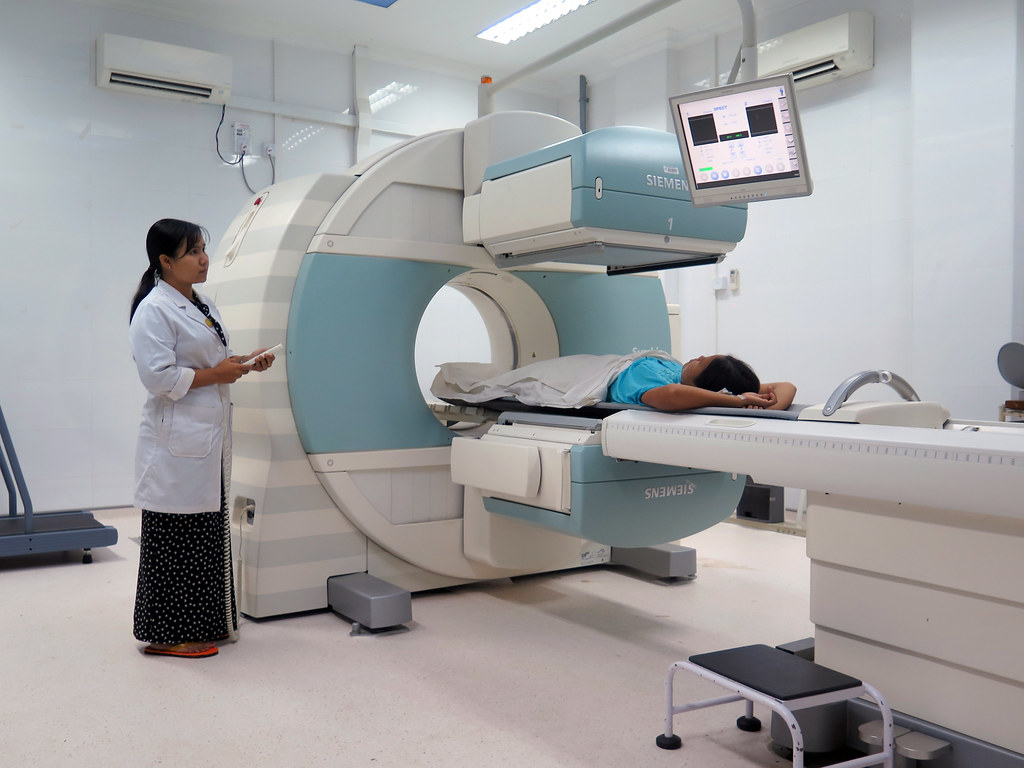Metabolic diseases can progress without obvious signs in their early stages. Detecting these conditions before symptoms emerge is one of the strengths of nuclear medicine. This advanced imaging field uses small amounts of radiotracers to highlight functional changes inside the body—often before structural changes appear on traditional scans. With early insight, patients and providers can begin targeted care that supports long-term management.
Understanding How Nuclear Imaging Works
Nuclear medicine focuses on how organs and tissues are functioning. Unlike other imaging methods that show anatomy, this type of scan reveals how the body processes nutrients, hormones, and signals. A radiotracer, which is a tiny amount of radioactive substance, is introduced into the body. It then travels through the bloodstream and gathers in specific areas based on how cells and organs are working.
The images produced during these scans help highlight whether certain processes are normal or disrupted. Because many metabolic diseases involve irregular processing of glucose, calcium, or other substances, nuclear medicine allows specialists to track these patterns more closely and accurately than with routine blood tests or ultrasounds.
Pinpointing Early Signs of Thyroid and Parathyroid Disorders
One of the most common metabolic conditions evaluated through nuclear medicine involves the thyroid. A thyroid scan uses a radiotracer to show how much of the substance the thyroid absorbs. This absorption rate helps determine whether the gland is overactive or underactive—two common signs of metabolic disease. Parathyroid imaging can also reveal whether hormone-producing tissue is functioning too aggressively, which can lead to calcium imbalance. Left undetected, these conditions may contribute to bone weakening, kidney strain, or other systemic problems. Early identification allows for noninvasive treatment planning that reduces risks before symptoms worsen.
Uncovering Functional Changes Before Symptoms Appear
What sets nuclear medicine apart in the detection of metabolic conditions is its ability to identify changes before they cause noticeable symptoms. In many metabolic diseases, functional changes inside the body happen months or even years before pain, fatigue, or weight issues begin.
For instance, disorders involving glucose metabolism may show up through altered uptake in certain tissues. Nuclear imaging can reveal whether the body is processing energy correctly, which gives specialists the ability to act early. With timely diagnosis, lifestyle or treatment plans can begin sooner, possibly slowing progression.
Supporting Accurate Diagnosis for Complex Metabolic Conditions
Some patients experience symptoms that overlap with more than one condition. Weight changes, digestive discomfort, or temperature sensitivity may be linked to several different metabolic problems. Nuclear medicine helps narrow down possible causes by tracking exactly where metabolic signals are disrupted. In cases of adrenal or pancreatic issues, targeted imaging may help identify tumors or tissue that is releasing hormones in irregular patterns. Rather than relying on trial-and-error treatment, nuclear scans offer precise information that guides decisions and reduces delays.
Guiding Treatment and Monitoring Progress Over Time
Once a diagnosis is confirmed, nuclear imaging continues to provide value throughout the treatment process. Follow-up scans may be used to measure how well a condition is responding to medication or surgery. These tests allow providers to see whether hormone levels have stabilized or if abnormal tissue activity has returned.
This approach offers both provider and patient a clear view of what is happening on a cellular level. It can prevent overtreatment or missed relapses by showing metabolic activity in real time. Over months or years, nuclear medicine becomes part of a complete care strategy that supports monitoring without requiring frequent invasive testing.
Discover Nuclear Medicine
Nuclear medicine offers powerful insights into metabolic disease at stages when other tools may miss key changes. By revealing how the body is functioning—not just how it looks—this approach supports earlier diagnosis, tailored treatment, and better outcomes. If symptoms are unclear or if a provider suspects a deeper metabolic issue, nuclear imaging may offer the clarity needed to move forward with confidence.
- The Diverse Specializations Within Ophthalmologists and Their Impact on Eye Health
- Exploring the Role of Sports Medicine in Injury Prevention
- Understanding the Different Types of Hernias and Their Symptoms
- How Internal Medicine Helps When Managing Chronic Conditions
- What To Expect Before, During, and After Liposuction

